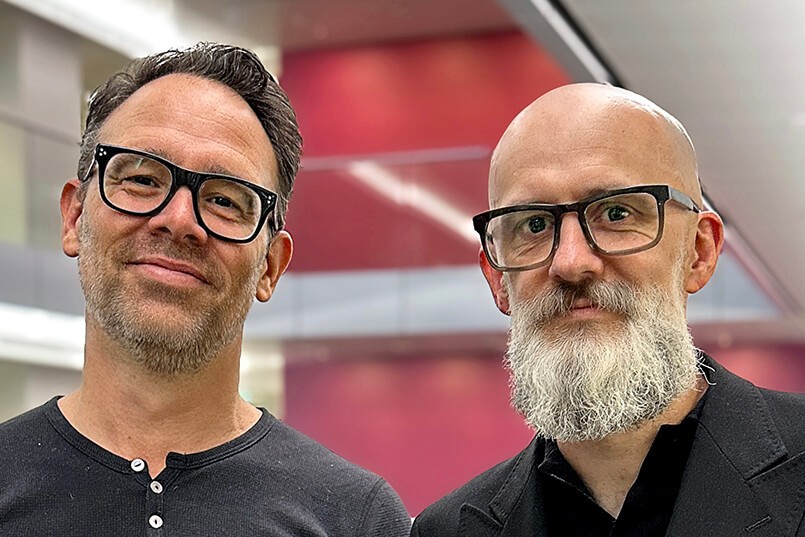Strategy is a fundamental driver of business success, yet it is one of the most misunderstood terms thrown around the halls of business. Often mistaken for a goal or tactic, a strategy is how a company chooses to reach its goals, or to paraphrase Michael Porter it’s ‘doing things differently or doing different things’ to gain market advantage.
And, at its core, a strategy addresses shifting priorities that can come from any new business opportunities, technologies, market evolution or increased challenges.
Traditionally the strategic planning process, and with it the development of a shiny new five-year strategy from which to drive the company forward, was a 3-4-month process involving many senior people across the business.
Once it was cemented, managers at the functional levels across finance, marketing, IT and sales etc, would develop their own supporting strategies. This is still the practice in many organisations we work with, however, as fast-paced disruption becomes the norm for many industries, it is becoming more evident that strategic development needs to become more adaptive, flexible and emergent; for example, a big goal with parameters around it.
And to support this, the thinking around structures needs to evolve to allow companies, and teams within those companies, to quickly adapt and resource to better suit and deliver on any new strategic focus.
Strategy must define the structure
It was the business historian Alfred Chandler who introduced us to the theory of firm, which was based on his extensive study of large corporations. His theory stated, ‘structure must follow strategy’ and, any changes at a strategic level could only be successful if structure was redesigned to suit.
The rationale behind this was to ensure organisations were structured in such a way as to allow for them to administer any new strategy and minimise any inability to support strategies because of its existing structure. This is not a new theory. Chandler floated it back in the early ‘60s and since then, except for some detractors, it has been widely embraced as solid business thinking.
In the past, this theory has been applied to whole of organisation thinking, however, it has become apparent to the team at TrinityP3 that now more than ever, strategy driving structure is critical at the more dynamic functional level, particularly marketing, where key capabilities to deliver on the overarching business strategy are housed.
The changing place of marketing
Over the last decade the team at TrinityP3 has watched the role, and importance of marketing change, and alongside these changes its place within the organisation.
Marketing is now happening in a more complex and unpredictable landscape, and thanks to technology together with the data tsunami, empowered customer and industry disruptors, marketing is now more than ever a function of business that must permeate across all other functions of an organisation.
Marketing is no longer a department to be viewed by the business as a separate (cost draining) column on the organisational chart. Today it is a critical, interdependent function that is reliant on, and responsible to, other teams to be able to deliver. Today, the very real and key role of marketing needs to play out across all functions of a business to help it drive its strategic priorities.
CMO’s are onto this. We know this because we work closely with CMO’s who are furiously trying to address the issues they are facing internally and externally through structural assessment and alignment to strategic shifts.
However, what we are also seeing are the results of best intentioned CMO’s and organisations who, prior to engaging TrinityP3, approach restructures in a comparable way to the early days of multi-division organisational philosophy. That is, they are bringing together segments from across the business to work under a single separate enterprise without considered thought to the strategy it is supporting.
What this means in the context of marketing is the bolting on of product development, market segments or channels that may have sat elsewhere in the business, to sit under the remit of the CMO. And, whilst this is in some instances a good start, what we see because of these changes is a CMO with one of the following dilemmas:
Restructure pitfalls
- A bigger, fragmented marketing department.
Bolting digital, social, product or segment teams onto an existing marketing structure to increase capabilities and drive strategic success is never the solution, and what we often find when we work with marketing teams who have done this is a divided department working to deliver on different KPIs that are vaguely aligned to the overarching strategy. This never ends well, and we often see decreased performance and increased conflict as rarely do these teams work well together, let alone across the rest of the business.
- Trying to be customer centric in a silo
What we then find, from this fragmentation, is a siloed department within a siloed organisation trying to deliver a seamless customer experience across platforms, channels or product, and failing. These marketing teams experience issues delivering the best possible customer experience because, quite frankly, silos are incompatible with delivering the level of customer experience needed in today’s landscape. The reason for this is, silos create an environment of ‘empires’ working toward separate KPI’s and priorities who lack insight (and quite frankly, care factor) into what is happening along the rest of the customer journey. As a result, we see minimal collaboration at both inter and intra-departmental level, which leads to myopic decision-making and poor customer experiences.
- Another company’s structure.
Ironically, implementing ‘best practice’ changes to suit your own marketing team’s needs is not best practice. Yet, it happens. From the work we have undertaken we know that no two companies or marketing departments have the same strategy and there is no one-size fits all marketing structure. The right structure is relative to an infinite number of variables, which destroys the concept of ‘best practice’, as does using a structure that has been fashioned for another company and their strategy.
- Centralised, decentralisation.
There are many ways to structure a marketing team yet centralised/decentralised seem to be the two most common go to options when brands go it alone. However, what we often see are attempts to centralise a decentralised team, or vice versa ending up a hot mess. From our work with large companies, we know all too well that it’s not easy for large traditional companies to change to more flexible and adaptable structures. We also know there is more to a marketing structure than centralising or decentralising. In fact, this process positions marketing simply as a service provider to the rest of the organisation denying marketing its role and contribution as a growth driver.
- Structure driving strategy
Due to the sheer enormity of restructuring as a task we often see marketing strategies organically morph to match what an existing structure can support. This is then often followed by an elevated level of outsourcing and inter-departmental wrangling to help plug the gaps. Critically, this can result in the loss of any viable competitive advantage or positioning and better, more superior strategies being overlooked because the existing structure simply can’t support them.
- Limited agility
Worse still, we will see all sorts of attempts at operational agility taking place, whereby teams are working more efficiently – faster, cheaper or better – without any thought to strategic or structural agility. Agile is the buzzword de jour however it is often applied generically to ‘marketing’. This makes the term confusing and misleading because agility should be broken down and applied to three key components strategic, structural and operational.
Strategic agility = creating new markets through innovation
Structural = adopting new structures to support strategic focus
Operational agility = adapting processes to allow you to work more efficiently
When we work with teams who have introduced new martech or process frameworks that will, in theory, allow them to be more agile, often we will witness process breakdowns and ‘bottlenecks’ because the structure isn’t aligned to support the new world order. From our experience, process must follow structure which must follow strategy, and agility (or flexibility) must be applied to all three.
It’s not easy changing shape
All of this is easier said than done, we get that, and I have previously touched on the difficulties marketing teams face when a structural shift is on the cards. Rarely is the level of restructure needed to support strategic imperatives a standalone exercise marketing can do in isolation to the rest of the business, and nor should they.
To work, marketing must have the support of the rest of the business, particularly as the shift in the role and place of marketing is gaining speed. Unfortunately, we often see this support as the hardest thing for marketing to secure and this is where we step up and deliver.
Need help?
At TrinityP3 we provide independent, expert advice to help you and your business identify and develop the best structural solution to suit your strategic imperatives. We then look across the industry to find the best operational solutions to support both.
We encourage a whole business approach to addressing the challenges faced in marketing. This is because we believe it is fundamental the marketing team is structured in the most optimal way to be able to deliver on the strategic objectives and goals of an organisation, as well as understand how the rest of the business can support marketing to do this.
Because otherwise, they won’t.
TrinityP3’s Marketing Structure Review service offers a comprehensive assessment of your internal structure. We deliver recommendations designed to optimise performance via the alignment of your marketing structure with the strategic focus and commercial purpose of your organisation.
Why do you need this service? Read on to understand more




